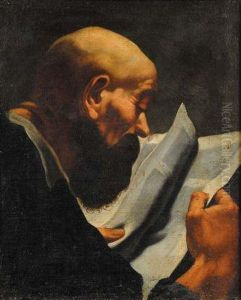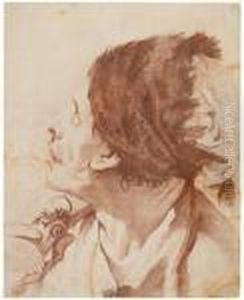Egidio Dall'Oglio Paintings
Egidio Dall'Oglio was an Italian painter and violinist renowned for his contributions to the arts in the 18th century. Born in Pesaro, Italy, in 1719, Dall'Oglio's early life was steeped in the rich cultural and artistic traditions of the Italian Renaissance's lingering influence. He showed an early interest in both music and painting, disciplines he pursued with equal passion. Dall'Oglio's artistic endeavors were a reflection of the era's emphasis on the harmony between music and the visual arts, embodying the Baroque period's dynamic and expressive qualities.
Throughout his career, Egidio Dall'Oglio became particularly noted for his skill as a violinist, eventually joining and contributing significantly to the development of the Este Court orchestra in Modena. His musical talents were widely recognized, earning him a reputation that complemented his artistic pursuits. As a painter, Dall'Oglio's works were characterized by their vibrant energy and meticulous attention to detail, qualities that mirrored the precision and expressiveness of his musical performances.
Despite the recognition he received as a musician, detailed records of Dall'Oglio's painting career are less prevalent, and his visual art contributions remain somewhat overshadowed by his musical achievements. Nevertheless, his dual talents underscore the multi-faceted nature of 18th-century artistic endeavors, where the fusion of music and visual art was not uncommon and was indeed celebrated. Egidio Dall'Oglio's legacy is that of a versatile artist who managed to excel in two distinct art forms, leaving a mark on the cultural landscape of his time. He passed away in 1783, leaving behind a body of work that, though not as extensively documented as that of his contemporaries, continues to be appreciated for its contribution to the Baroque period's artistic diversity.




